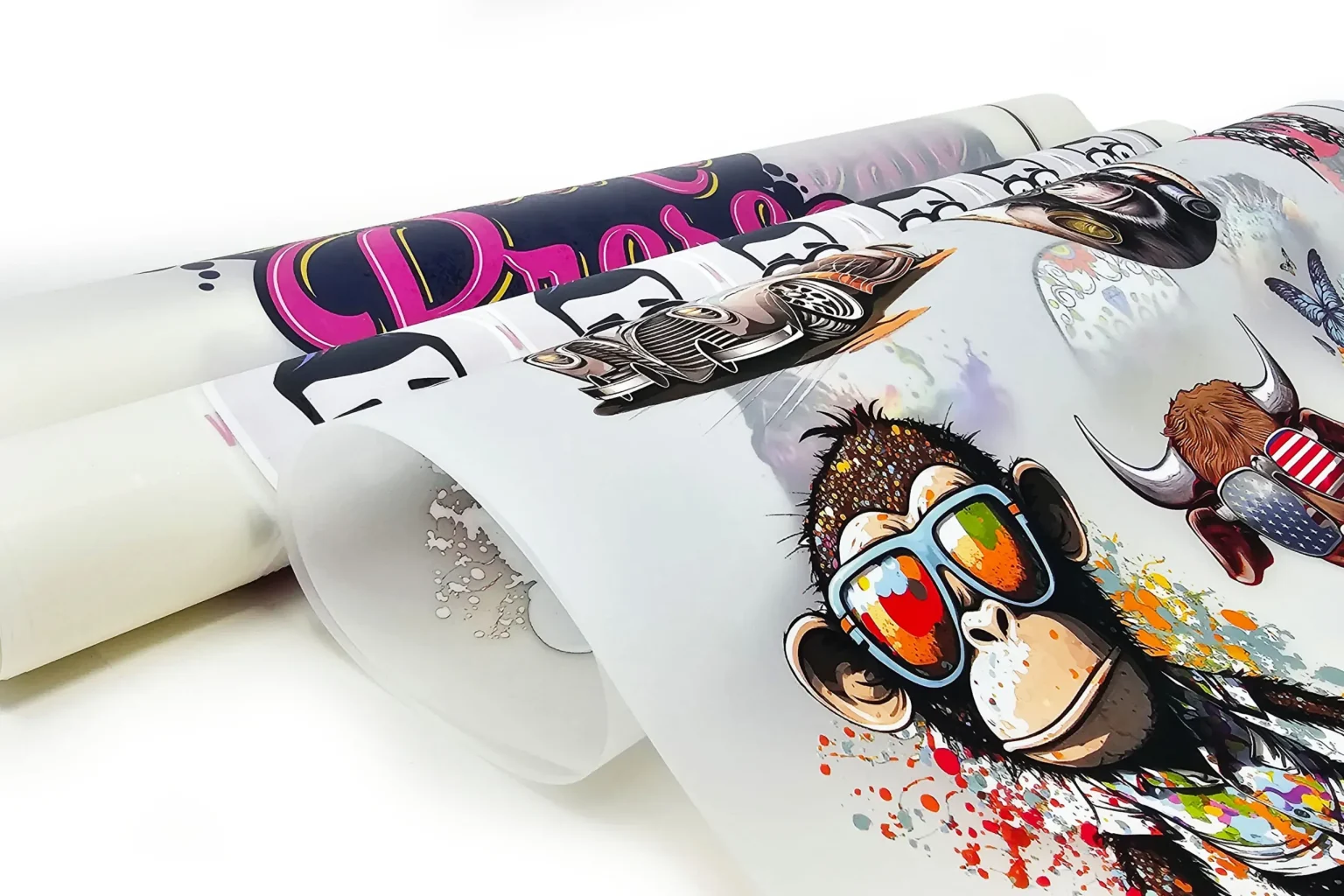DTF transfers, or Direct-to-Film transfers, are revolutionizing the world of custom apparel by introducing a fresh approach to apparel printing methods. This innovative technique allows for intricate designs and vivid colors to be seamlessly applied to a variety of fabrics, catering to the diverse needs of today’s consumers. As brands strive for engagement and personalization, DTF technology empowers them to create high-quality, customized products that align with the fast-paced market and the growing trend towards sustainable fashion. By embracing DTF transfers, businesses can not only enhance their merchandise offerings but also significantly reduce production times and costs. In this article, we will explore the transformative power of DTF transfers in the custom apparel industry and how they are setting the stage for future possibilities.
Direct-to-Film (DTF) printing techniques are shaping the landscape of personalized clothing, offering an efficient alternative to traditional apparel printing. As this process involves leveraging innovative film technologies to transfer designs, it brings a new dimension to custom clothing applications. Many brands are now adopting these methods to enhance the quality and visual appeal of their products, ensuring they cater to the demanding tastes of modern consumers. With an emphasis on sustainable practices and the ability to produce eye-catching graphics on various materials, it’s clear that DTF transfers are more than just a trend. They signify a significant shift towards a more advanced, eco-friendly approach in the fashion and apparel industry.
The Rise of DTF Transfers in Custom Apparel
The custom apparel industry is undergoing a significant transformation due to the introduction of Direct-to-Film (DTF) transfers. Unlike traditional printing methods, DTF technology offers unmatched versatility and quality, making it an attractive option for businesses aiming to diversify their product lines. This innovative approach to apparel printing allows for vibrant, high-resolution images and intricate designs that were once thought impractical for various fabrics. Today, brands looking to capture the attention of consumers can achieve stunning visuals through DTF, facilitating a creative wave of custom fashion.
Furthermore, the rise of e-commerce has intensified the demand for personalized products, driving businesses to adopt technologies that not only improve print quality but also reduce costs and production time. DTF transfers are revolutionizing this space by enabling quicker turnaround times, allowing companies to meet consumer expectations promptly. As more players in the custom apparel market embrace DTF technology, the potential to stand out becomes even more feasible, marking a pivotal shift in how brands approach product offerings.
Frequently Asked Questions
What are DTF transfers and how do they impact custom apparel?
DTF transfers, or Direct-to-Film transfers, are a printing method that involves printing designs onto a special film, which is then heat-pressed onto garments. This technology allows for high-detail prints with vibrant colors, greatly impacting custom apparel by offering versatility, durability, and quick production times.
Which apparel printing methods are enhanced by DTF technology?
DTF technology enhances various apparel printing methods by providing superior quality and detail compared to traditional techniques. It outperforms methods like screen printing by allowing detailed designs on diverse fabrics, making it ideal for custom apparel.
How does DTF printing support sustainable fashion initiatives?
DTF printing supports sustainable fashion initiatives by utilizing water-based inks and eco-friendly films, which reduce the environmental impact. This aligns with consumer trends towards sustainability, making DTF a responsible choice for custom apparel brands.
Why is DTF technology considered cost-effective for custom apparel businesses?
DTF technology is considered cost-effective as advancements in printer technology and materials have reduced costs, making it accessible for small businesses. This affordability allows entrepreneurs to enter the custom apparel market without a hefty investment.
What are the key advantages of using DTF transfers for custom apparel?
The key advantages of using DTF transfers for custom apparel include exceptional print quality, reduced production times, cost-effectiveness, the ability to use on multiple fabrics, and support for sustainable practices, helping brands meet modern consumer demands.
How can businesses successfully utilize DTF transfers in their marketing strategies?
Businesses can successfully utilize DTF transfers in marketing by creating unique designs that showcase the vibrant capabilities of DTF printing. Leveraging social media and e-commerce platforms to promote these designs, alongside highlighting their sustainable practices, will attract a wider audience and enhance brand visibility.
| Key Point | Description | Implications |
|---|---|---|
| Quality and Versatility | DTF transfers produce high-quality, vivid colors suitable for various fabrics. | Ideal for diverse customer needs, enhancing product offerings. |
| Reduced Production Time | DTF method accelerates the printing and application process, leading to faster order fulfillment. | Helps businesses meet market demands quickly, maintaining competitive edge. |
| Cost-Effectiveness | Lower equipment and material costs make DTF accessible for small businesses. | Opportunity for entrepreneurship in the custom apparel sector. |
| Sustainability Efforts | Use of eco-friendly inks and materials aligns with market trends favoring sustainability. | Attracts environmentally conscious consumers, enhancing brand reputation. |
| Market Expansion | DTF is facilitating a broader reach for brands through e-commerce and social media. | Allows businesses to stand out and attract larger customer bases. |
Summary
DTF Transfers are fundamentally changing the landscape of custom apparel by combining quality, speed, and sustainability. This innovative method allows creators to produce intricate designs with vibrant colors on a variety of fabrics, opening new avenues for businesses. As the demand for personalized merchandise continues to grow, embracing DTF technology can significantly enhance a brand’s product offerings and market positioning. Furthermore, the focus on eco-friendly practices not only caters to consumer preferences but also builds a reputation for responsible production. Companies that harness the potential of DTF transfers are well-positioned to thrive in the competitive apparel industry.




